
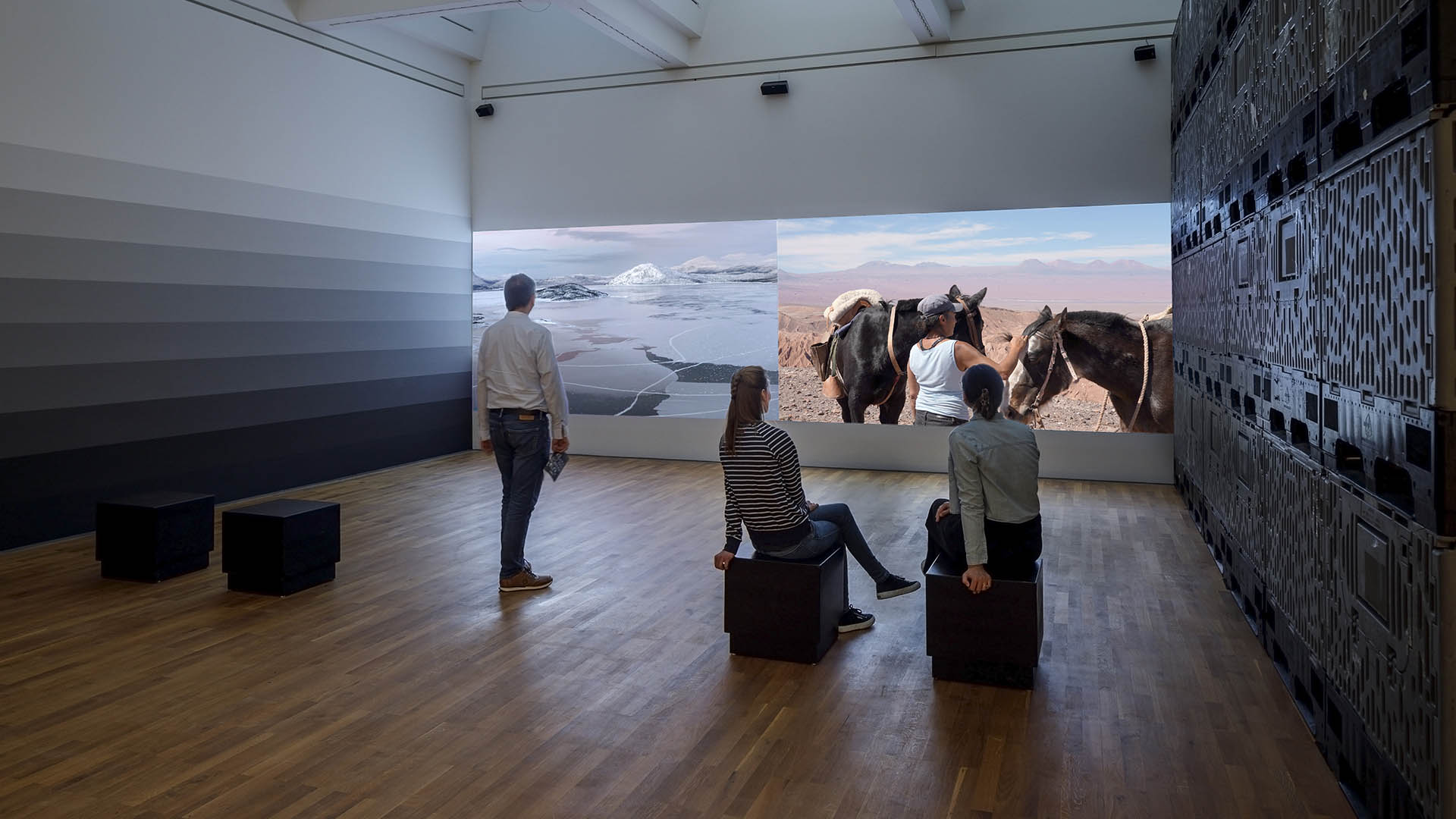

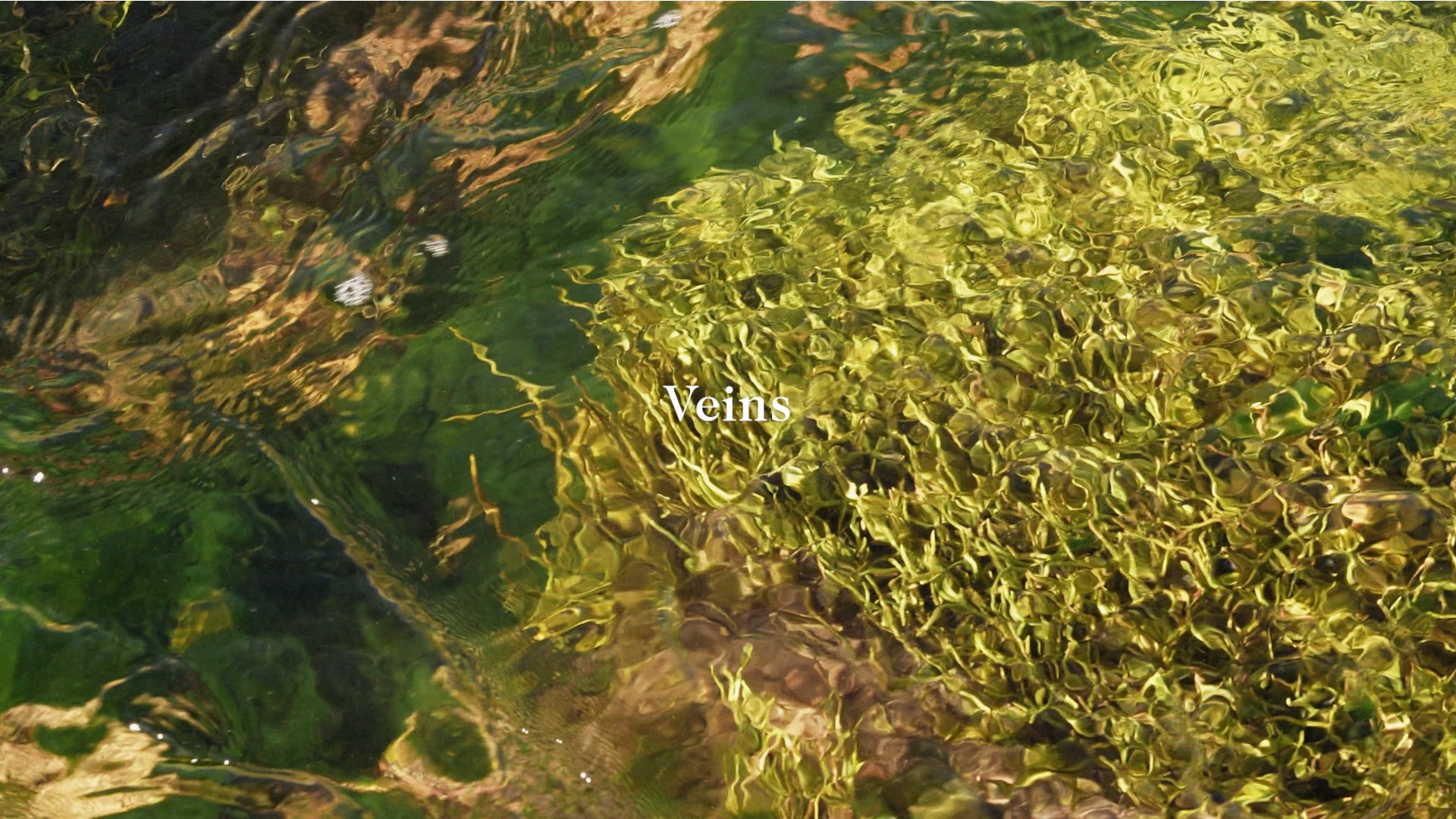
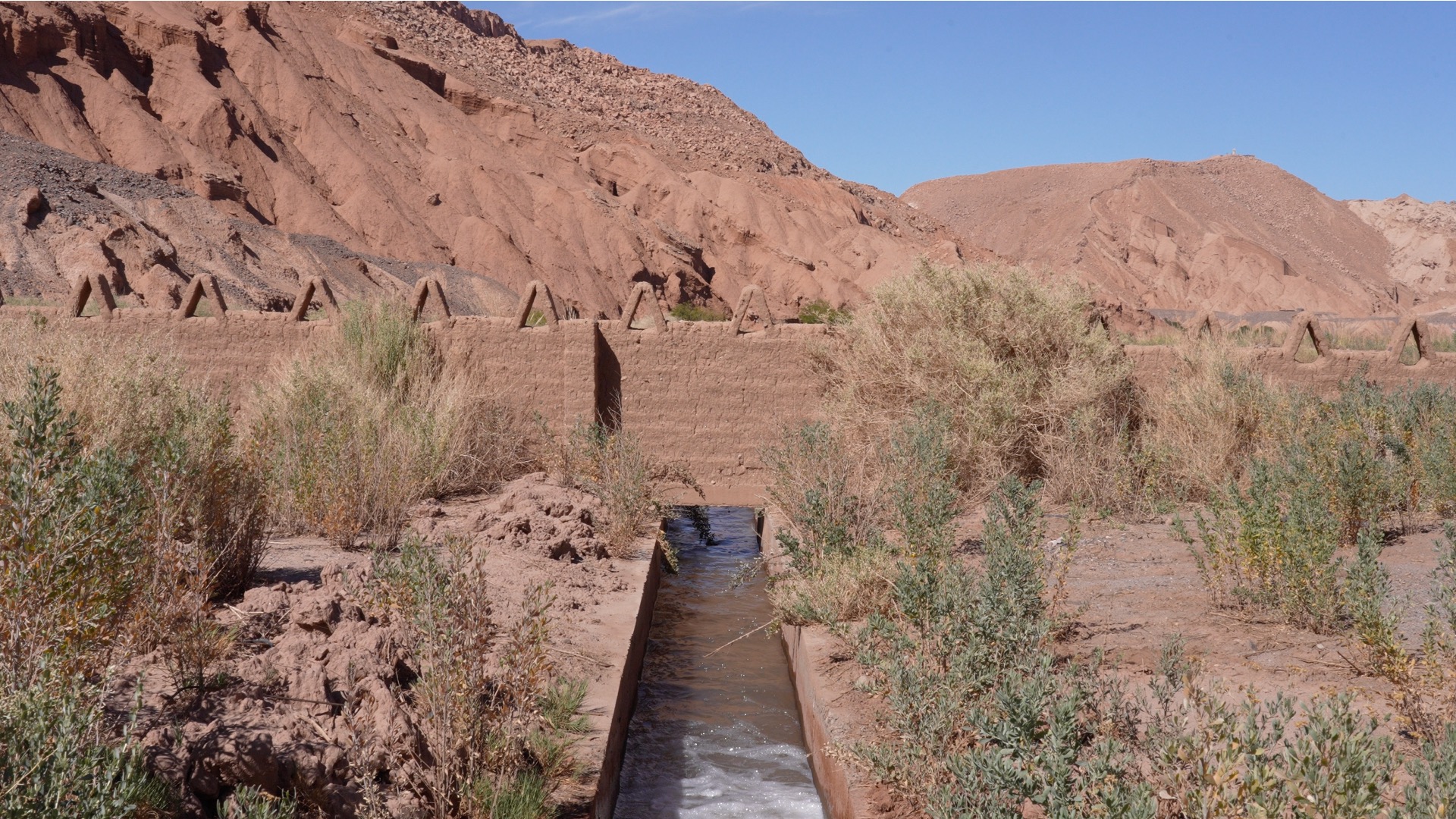
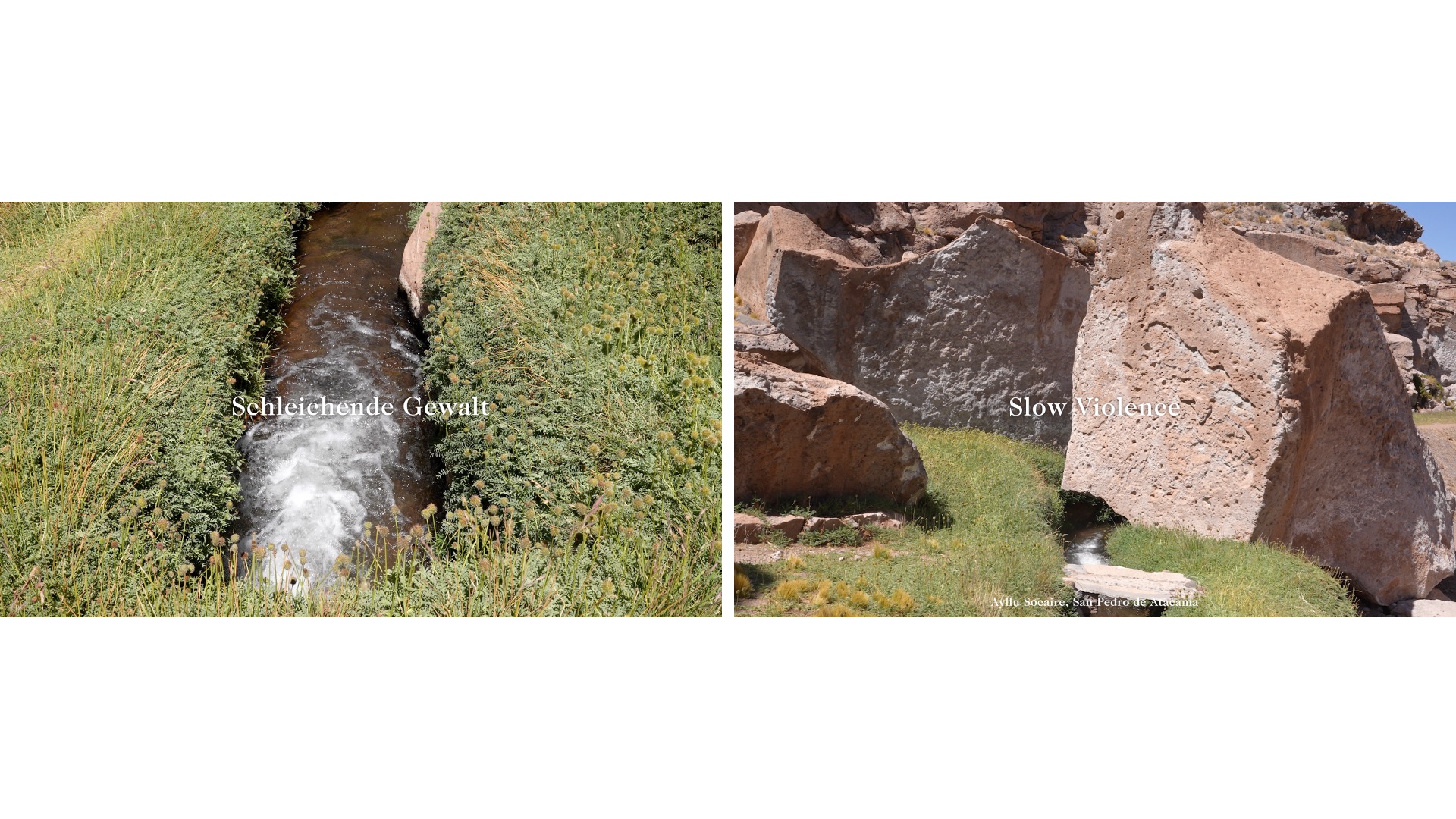
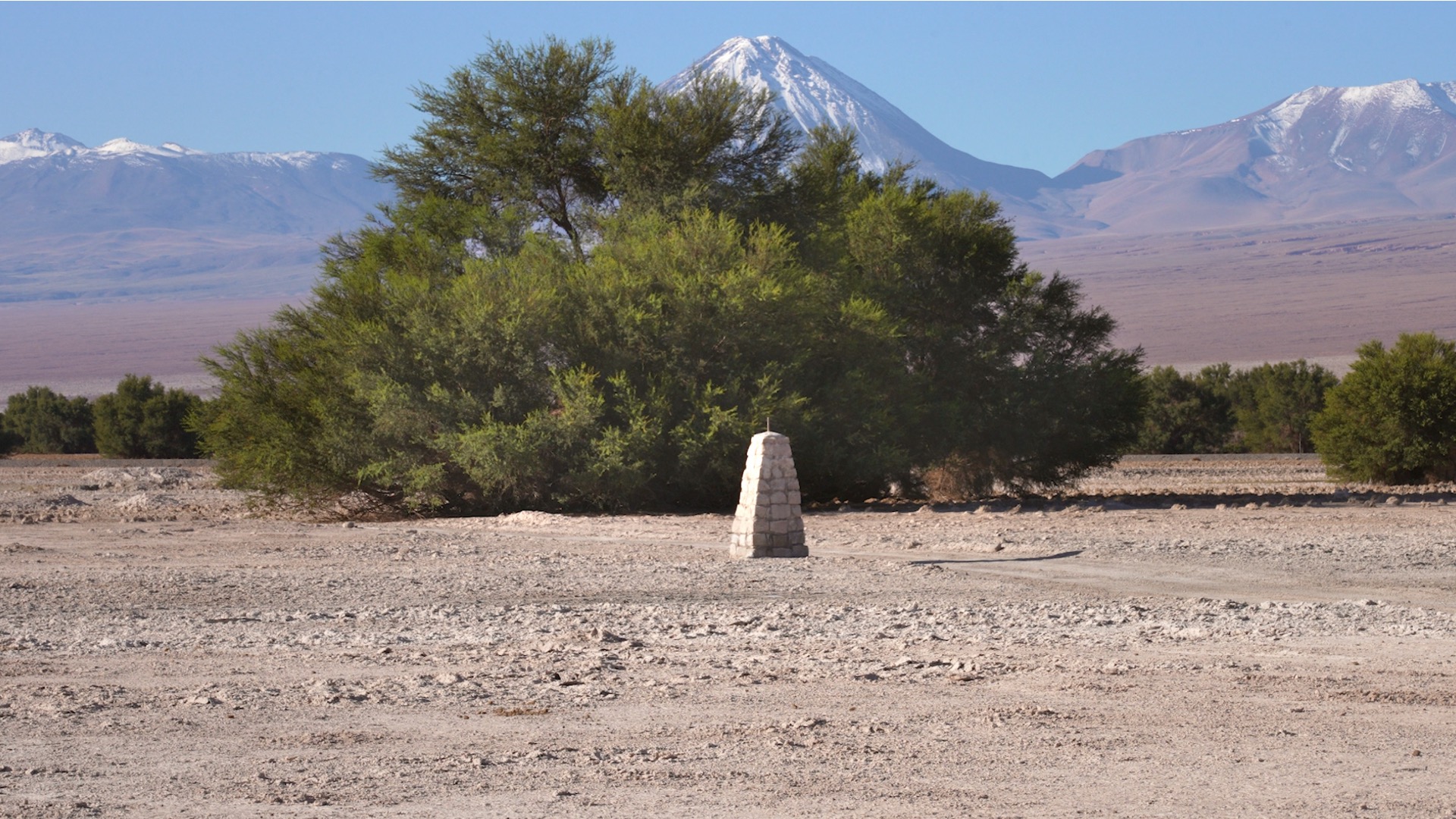

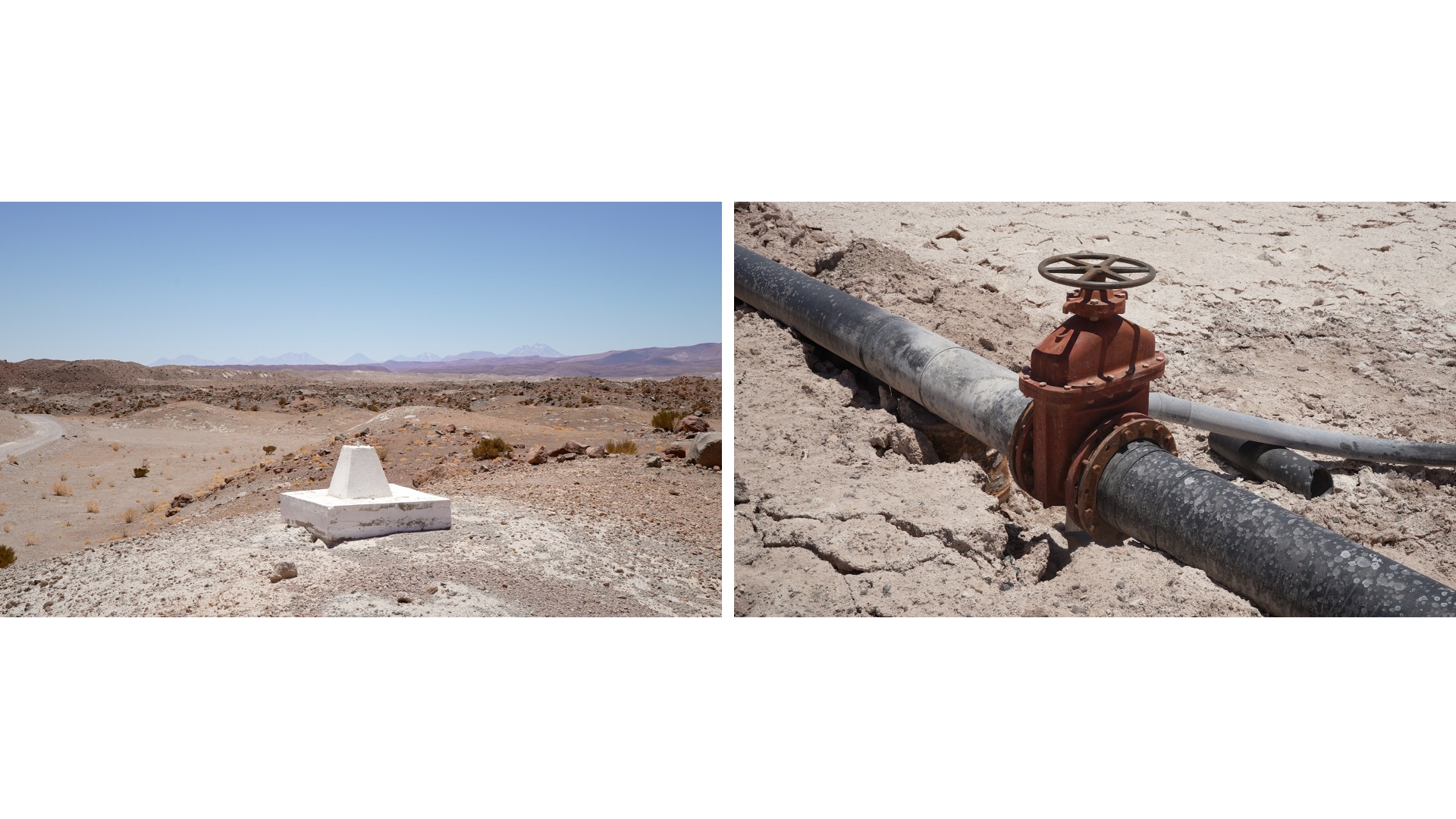
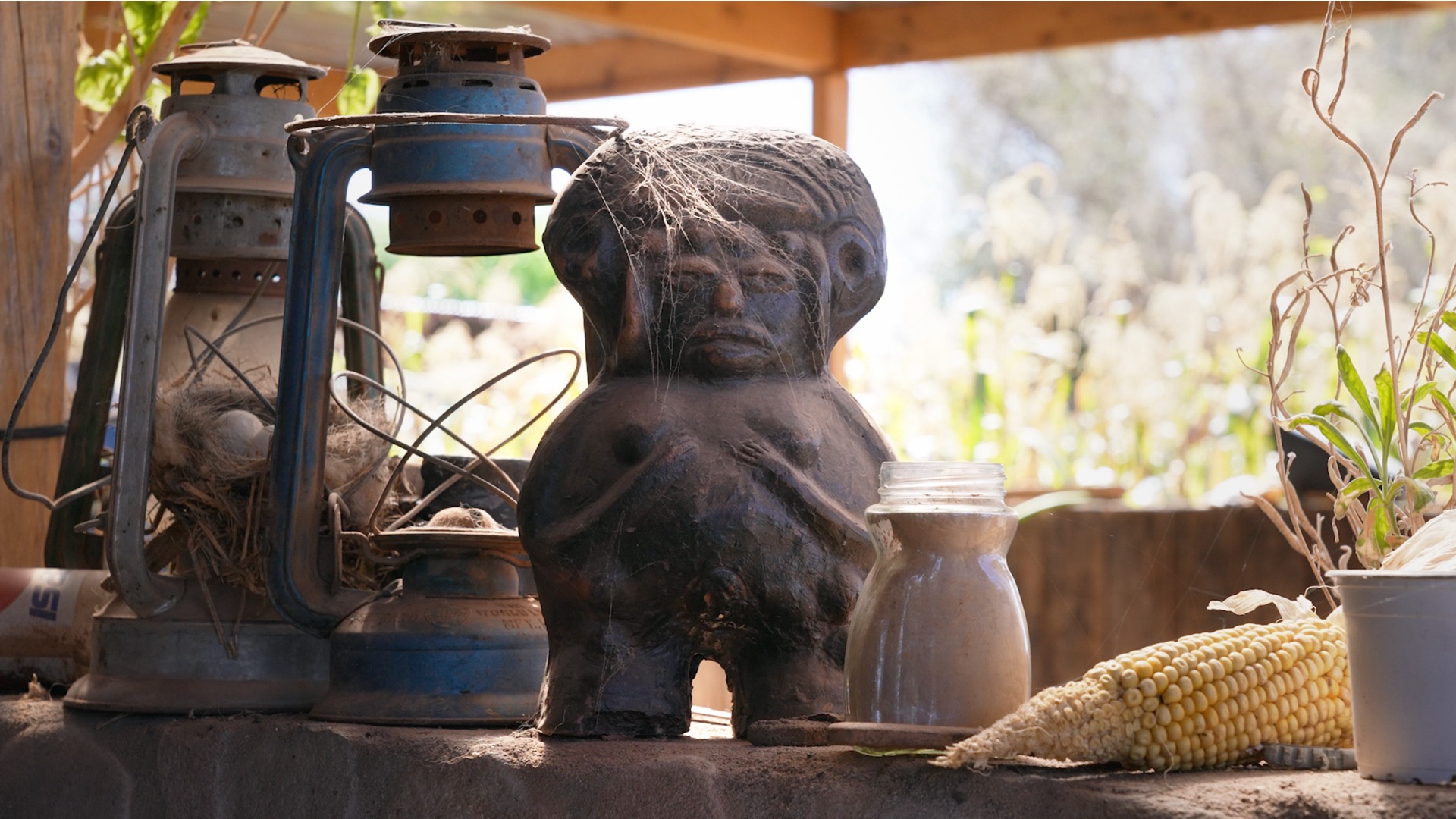



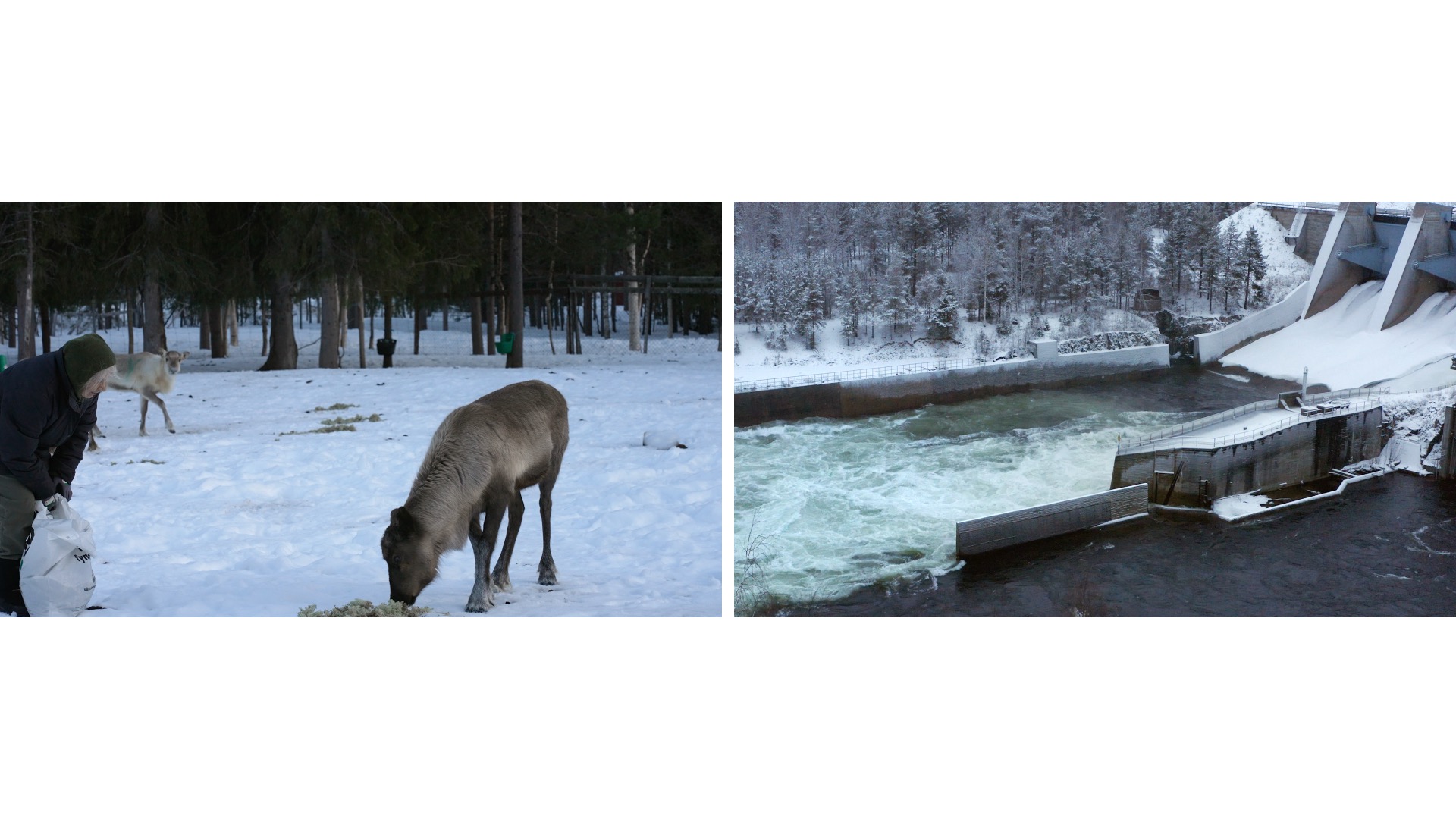
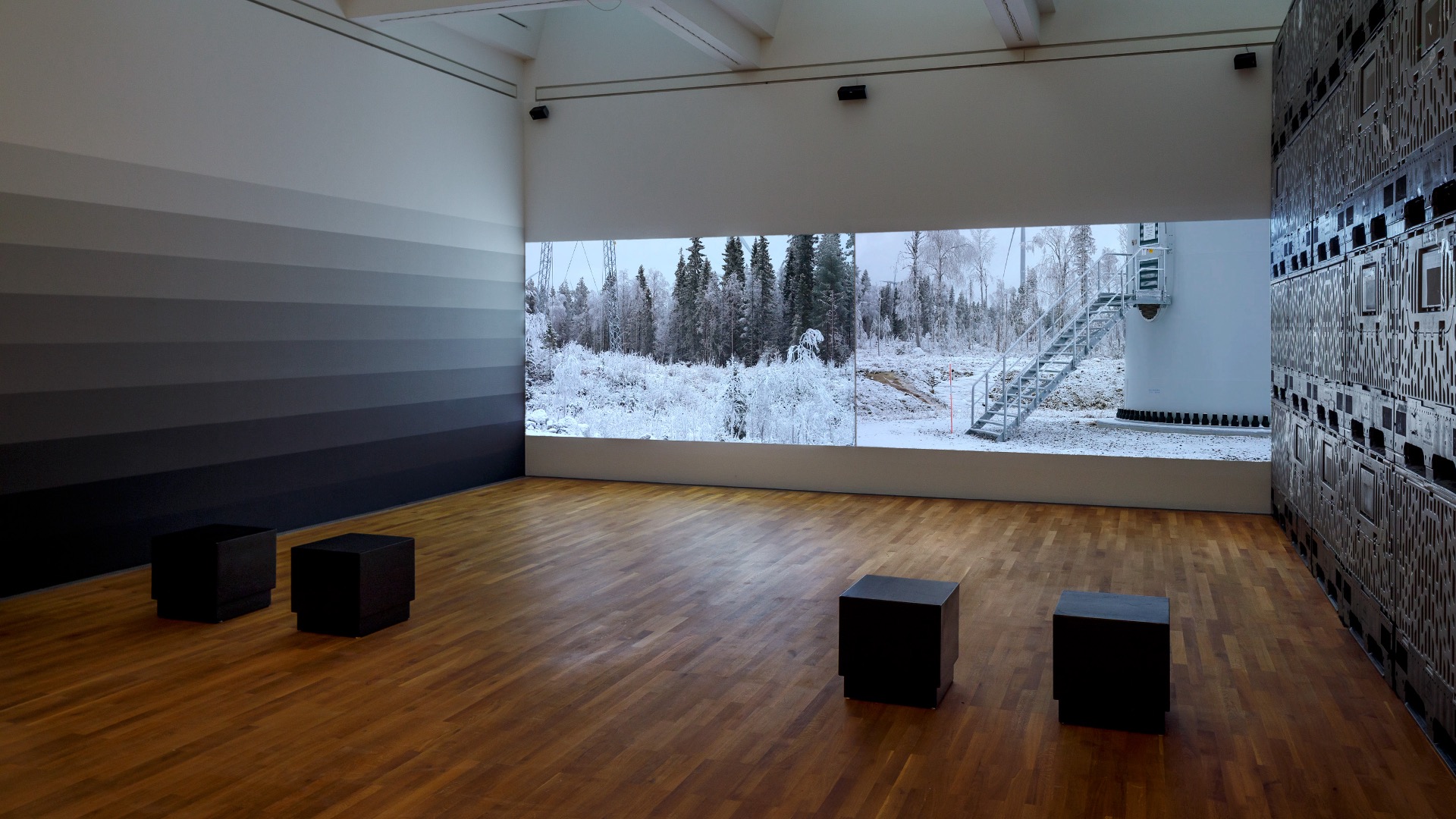
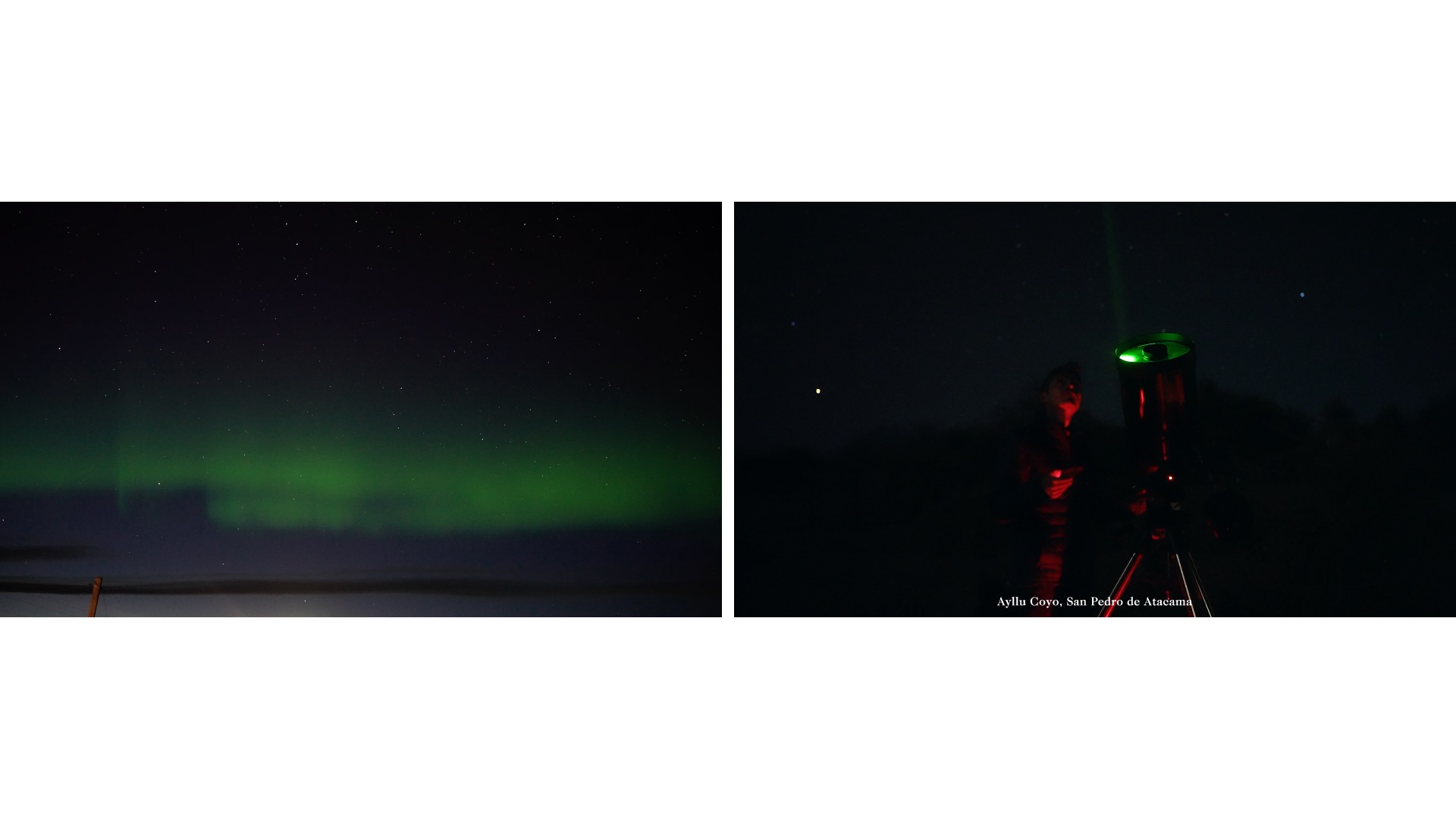
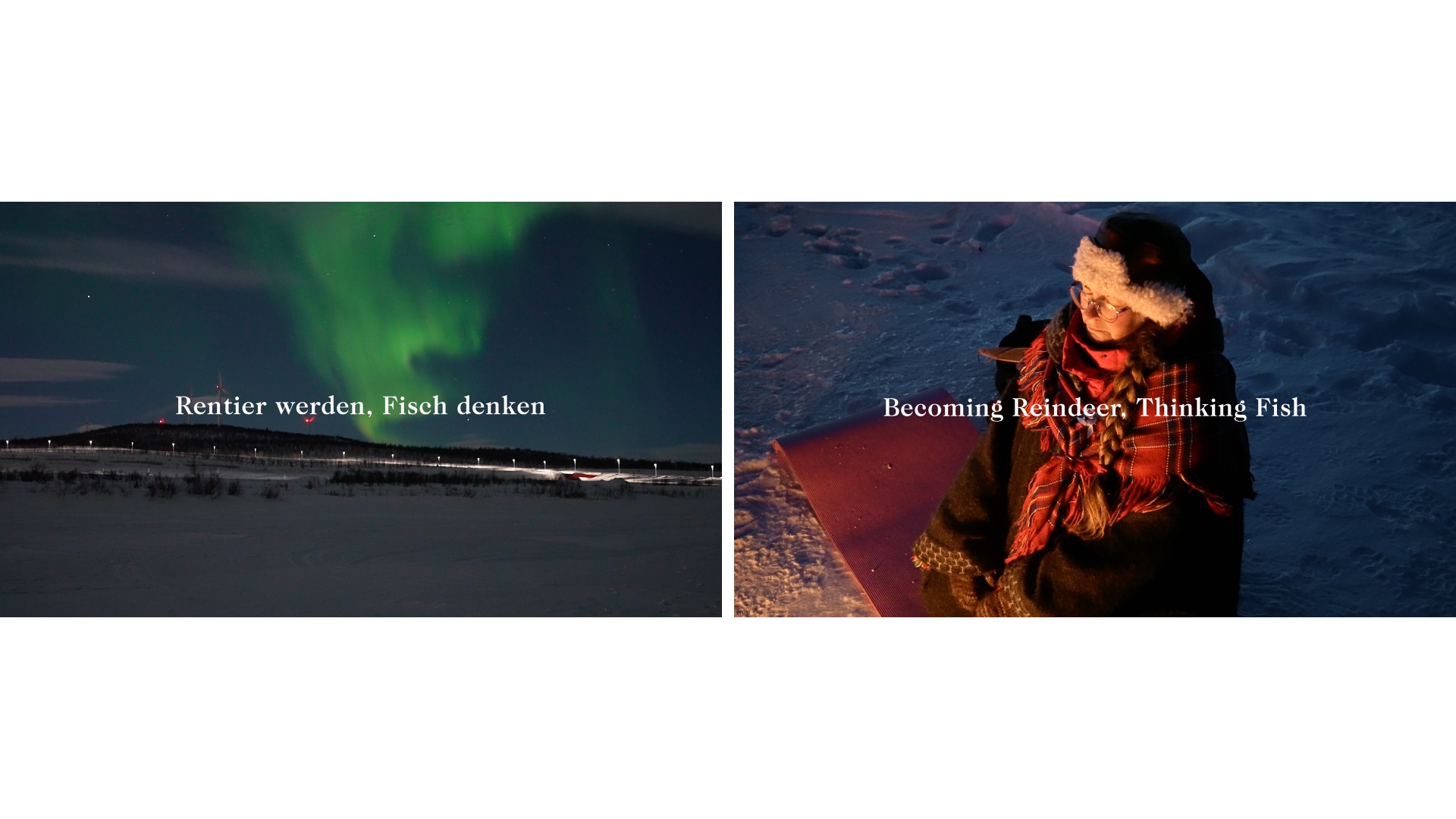
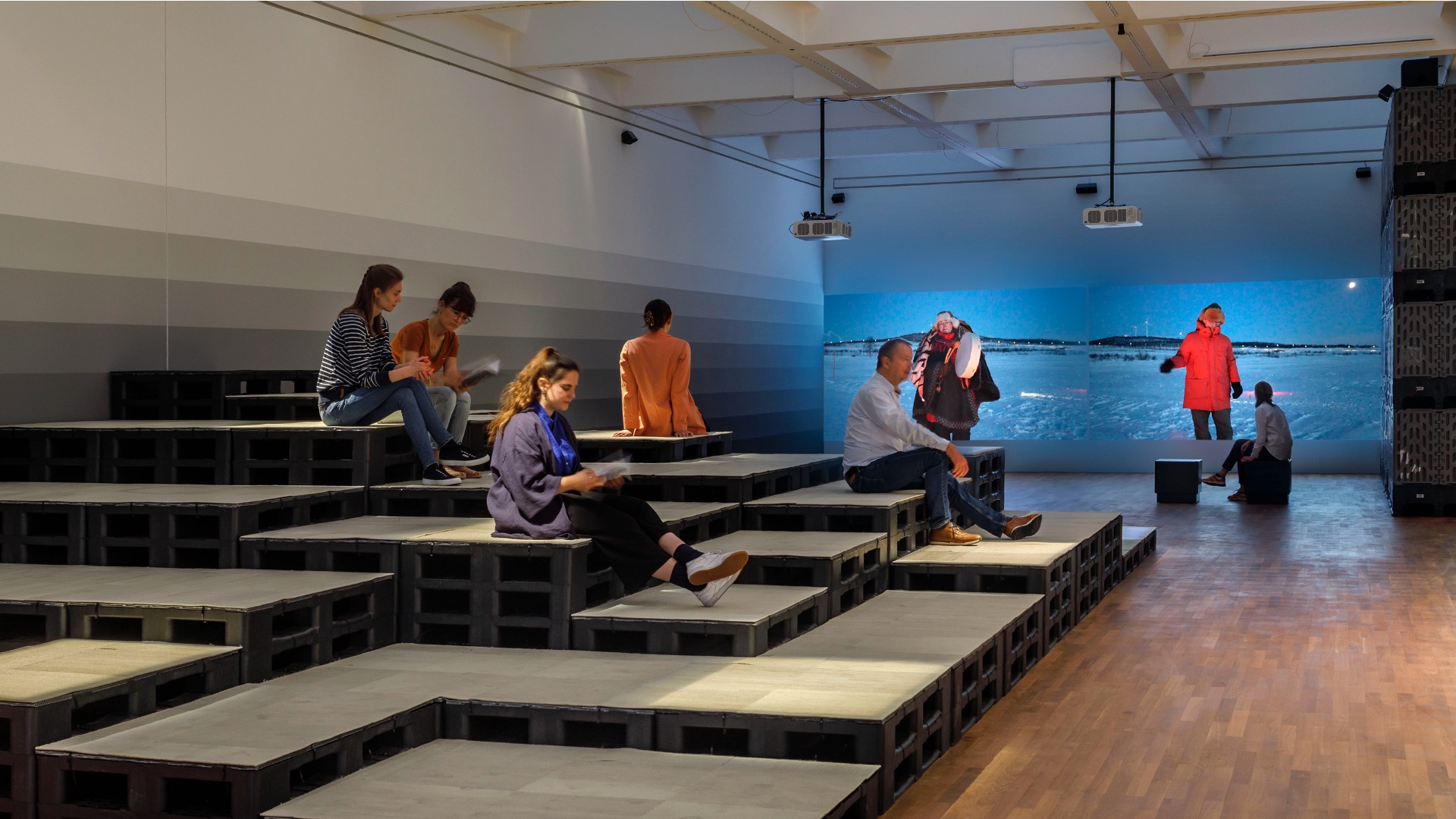






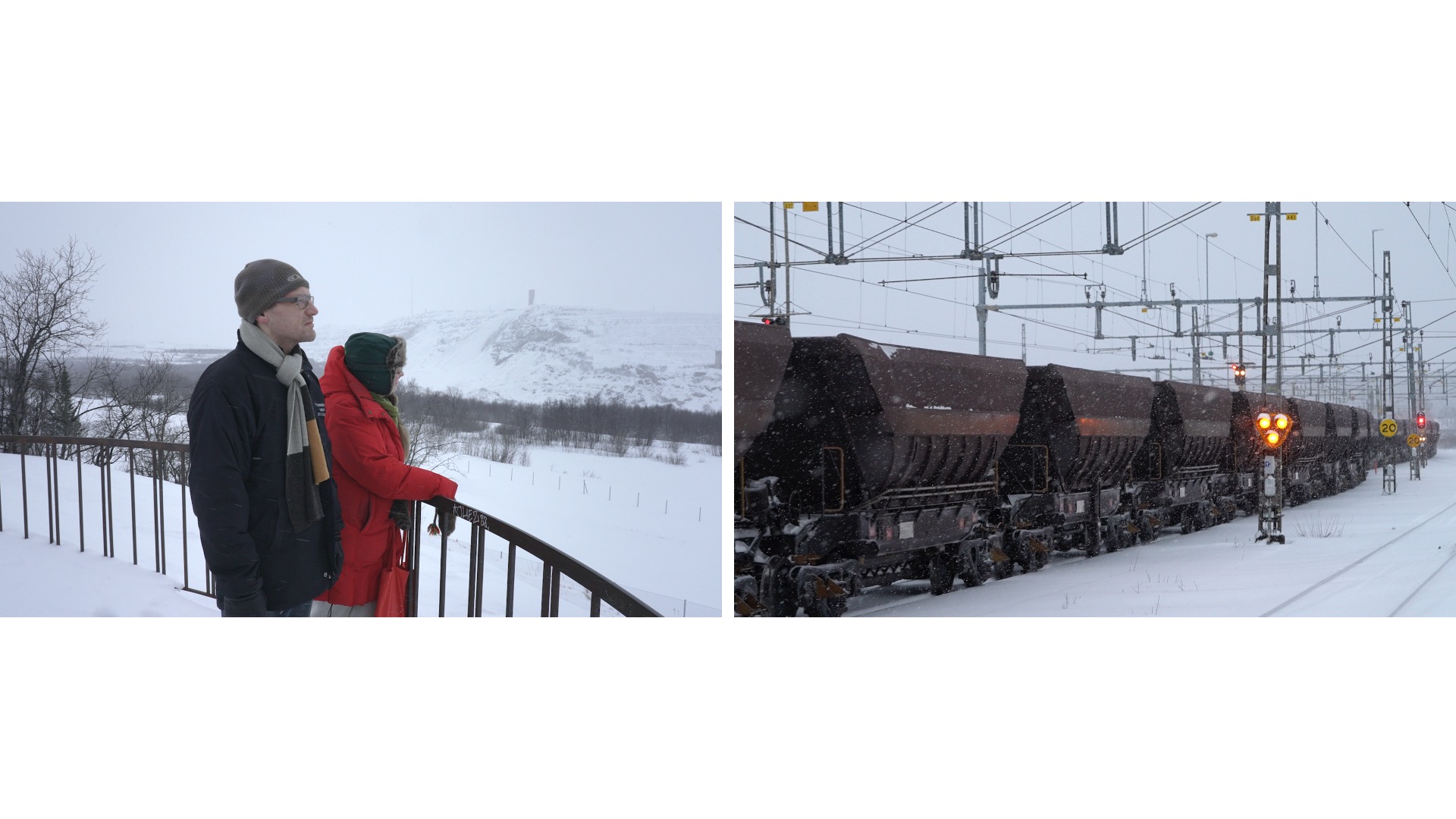




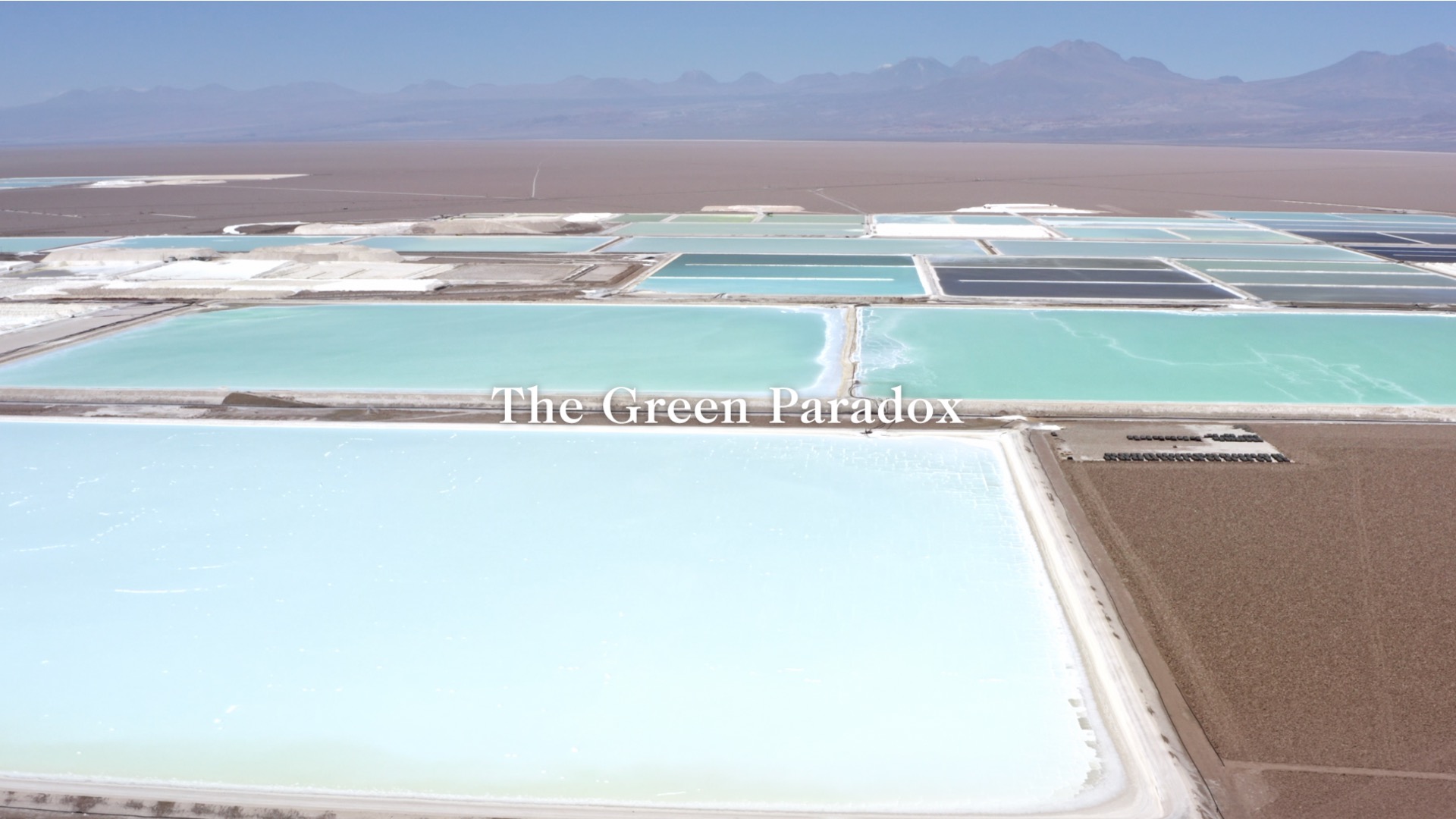


The green transition narrative in these extreme geographies is based on the claim that a substantial increase in metal mining is necessary to meet the material needs of renewable energy technologies and associated infrastructure. In Kiruna, where unjust state policies reiterate colonial patterns, the iron mining industry has historically occupied the traditional lands of the Sámi and affected reindeer herding patterns. White International media celebrates the corporate relocations of the mining town of Kiruna, where communities of over 3,000 households have been forcibly displaced with unfair compensation. This is occurring because the iron ore mine operated by the Swedish state mining company LKAB is destabilising the ground, and as a result the old city is sinking. In addition to the ongoing extraction of iron, recent discoveries of rare earth metals in Kiruna exceed one million tonnes of oxides, making it the largest known deposit of its kind in Europe.
In the Atacama, the natural environment is sacrificed in the name of progress. Copper, historically, and more recently lithium extraction activities—both key to the energy transition and the active materials in rechargeable batteries—are drying up subterranean aquifers and preventing access to fresh water for the Licanantay communities. The expansion of mining projects in these already affected regions has led to a rise in social, environmental, and economic injustices.
The video installation draws upon the scale of these operations by connecting territorial struggles concerning water, biodiversity, and identity loss with space observation. Kiruna is a gateway to the aurora borealis and a key site for studying the Earth’s magnetic field and its interaction with solar wind. The Atacama is a key site for astronomical observation, hosting the world’s largest observatories, some of which are located on the Chajnantor plateau at more than 5,000 metres above sea level.
--
From Mars to Venus: Activism of the Future was commissioned on the occasion of Into the Deep: Mines of the Future at Zeppelin Museum Friedrichshafen, Germany 26.05.2023 – 05.11.2023 curated by Claudia Emmertand Ina Neddermeyer. Developed in collaboration with video editor Lara Garcia Reyne, sound designer Udit Duseja, colourist Paul Willis and writer Ellen Lapper. It features Likanantay and Sámi activists Karen Luza, Maj-Doris Rimpi, Carola Aguilar Cruz, Veronica Moreno, Åsa Andersson and Janne Sirniö.
--
Supported by
Zero programme of the Kulturstiftung des Bundes (German Federal Cultural Foundation), Beauftragte der Bundesregierung für Kultur und Medien (Federal Government Commissioner for Culture and the Media). Fieldwork supported by AHRC project Frozen Future Royal College of Arts (RCA) / University of Brighton, and the FORMAS-funded project Indigenous perspectives on forest fires, drought and climate change: Sápmi based at the Centre for Multidisciplinary Studies on Racism (CEMFOR), Uppsala University, Sweden.
--
Link
Artist presentation
From Mars to Venus: Activism of the Future video teaser
--
Exhibtion
Into the Deep: Mines of the Future, Zeppelin Museum Friedrichshafen, 2023
--
Publication
Into the Deep, exhibtion catalogue, 2023
Conversation with Ina Neddermeyer, 2023
--
Discussion
TBA-21 Academy, 2023
--
Events
Conference: Extractivism / Activism, Autograph / Paul Mellon Centre, London, 2024
Transindigeneity: Between Local Specificities and Global Complexities, Global Indigenous Arts Network (GIAN), Universidad de Barcelona, Spain, 2023
--